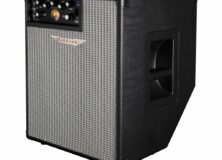
Read Time 2 Minutes

I first came across shell chords while reading about jazz pianists. For a piano player, a shell chord is a simplified chord form that’s easy to play with just the left hand. This leaves the pianist’s right hand free to play solos.
On the guitar, shell chords can help us free up fingers to allow us to play bass runs or melodic lines, and they can help us gain a clearer understanding of the relationships that exist between chords.
Using shell chords requires a close working knowledge of how chords are constructed–and which notes are most important to any given chord.
For example, compare the notes that make up the following three chords:
CMaj7: C E G B C
min7: C Eb G Bb
C7: C E G Bb
As you can see, between them these chords share a lot of notes in common. They ALL contain the notes C and G. But all these chords sound noticeably different from one another, because CMaj7 has an E and a B while Cmin7 has an Eb and a Bb. Last of all, C7 has an E and a Bb. These differences look small on paper, but they are actually significant enough to sound very different and earn separate names.
The note C is important because it’s the root of the chord, the fundamental note around which the others revolve. But what about that G? Since it’s included in all of those chords above, we can actually skip it. It isn’t unique to the identity of any of those chords, so if we left it out it wouldn’t cause any ambiguity.
I’ll leave you with a few bare-bones voicings for CMaj7, Cmin7, and C7. The note G is omitted in each case. Notice how the differences between these chords result in different shapes on the fretboard!
Because these shapes contain no open strings, you can of course move them up and down the neck, just as you would with barre chords. And because they contain only the notes essential to the identity of each chord type, they’re great for ear training.
Stuff to check out next:
-
Have a look at our Chords and Arpeggios Section
- “Caged” Chords help with writing songs
- A basic introduction to minor chords






very cool. never knew that you can actually eliminate a certain note and keep the integrity of the chord. I’m going to start trying this.
Hey Doug, thanks for commenting! Yeah, in certain cases you can drop notes without changing the chord type.
The open voicings of chords like C and G and Am each double up on a lot of notes to get a fuller sound. The open G major chord form actually has three of the note “G” in it, two of “B,” and one “D.” So really there are just three notes, and we could safely lose some of the extra G’s and B’s.